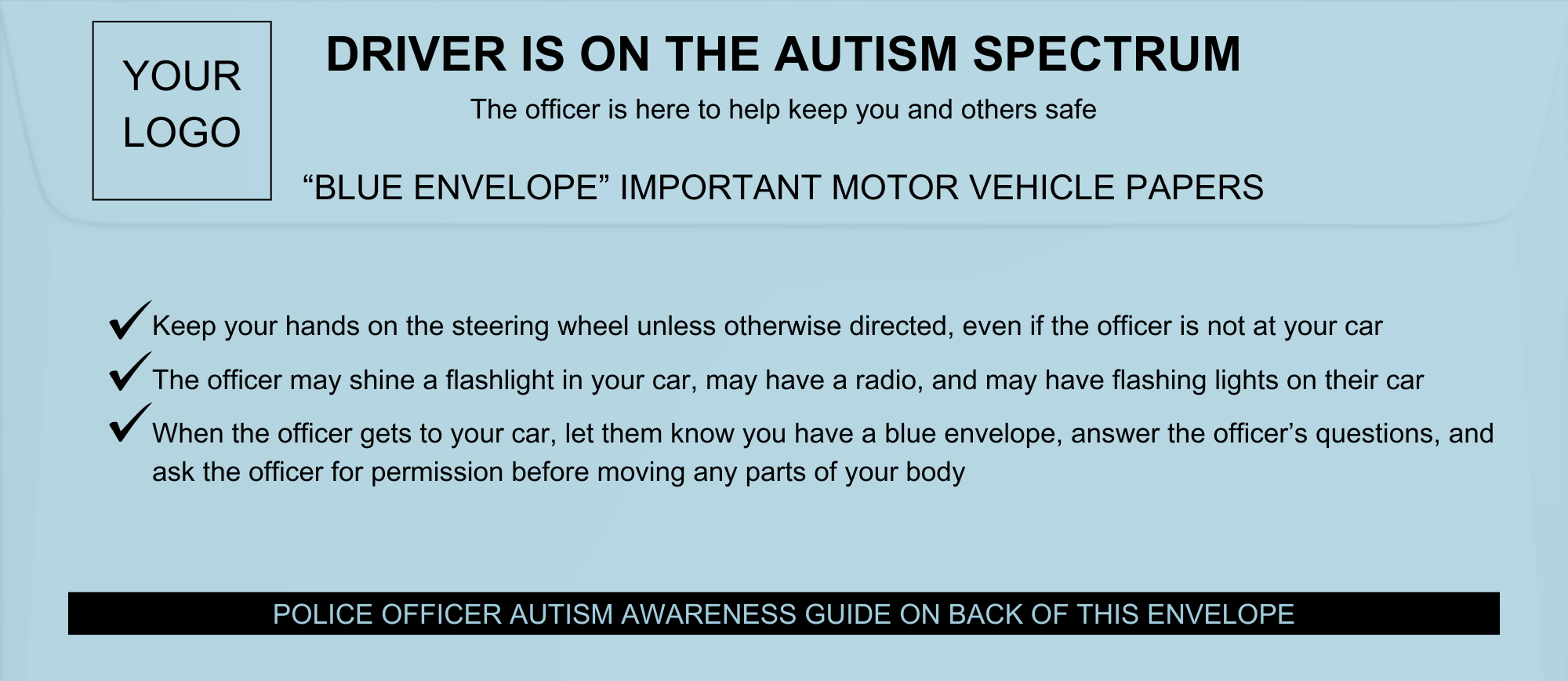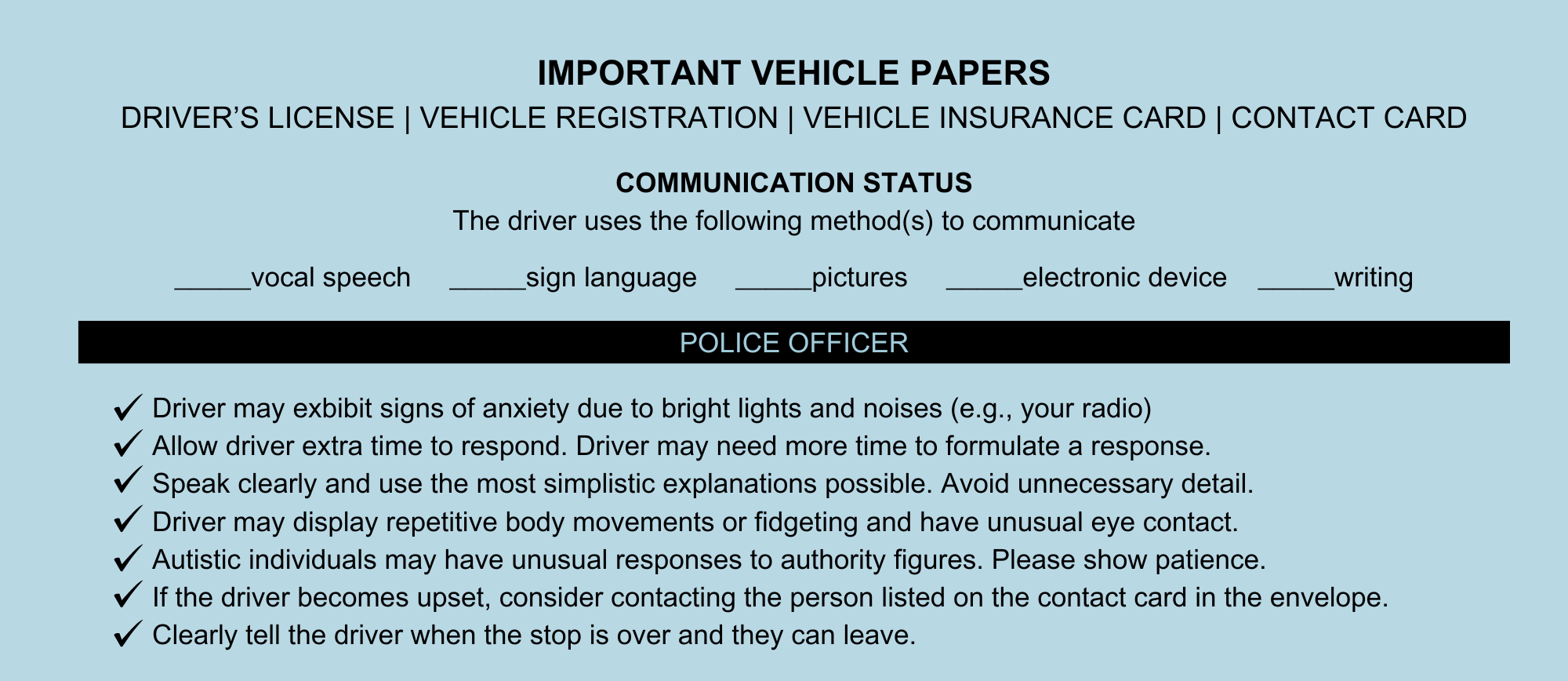
About Blue Envelope
Piloted in states like Connecticut and Arizona and first implemented in New Jersey in Hunterdon County (pictured above), the Blue Envelope program is designed to create safer and more positive interactions between law enforcement officers and individuals with autism during traffic stops. The program provides autistic drivers with a distinct blue envelope to store essential documents such as their driver’s license, registration, and insurance information. The envelope also includes instructions to inform officers that the driver is on the autism spectrum, providing specific communication tips to reduce the likelihood of misunderstandings or escalations.
For law enforcement officers, the Blue Envelope serves as a visual cue, alerting them to modify their approach when communicating with an autistic driver. Officers are encouraged to practice patience, use simple language, and allow extra time for the individual with autism to process information. By improving mutual awareness and communication, the Blue Envelope program aims to reduce stress and anxiety for autistic individuals, helping to prevent potentially volatile situations and promoting positive community relations between law enforcement and the autism community.
Considerations With Blue Envelope Language
While some aspects of the Blue Envelope program are standard (e.g., having documentation in a blue envelope and having both instructions to the autistic driver and to law enforcement), other aspects have some variability (e.g., the specific language used, images on the envelope, whether or not an insert is included). Having consulted with persons with autism and autism professionals, Autism New Jersey has several suggestions on how to modify the “standard” language to ensure it is more autism friendly.
- Incorporate language to clarify to officers that autistic individuals may have unusual responses to authority and to affirm to autistic individuals that officers’ role is to keep people safe. The importance of this language was highlighted to us by an autistic individual who expressed a desire to ensure that authority figures interact appropriately with autistic individuals.
- Be mindful of puzzle piece symbolism. Although it is commonly used to represent autism, it is a symbol that can be divisive among some individuals in the autism community.
- Include a supplemental contact card inside the envelope for the driver to fill out with their name and the names and phone numbers of two contacts. It is suggested to use the language of “someone I know” as opposed to “my guardian/parent.” Doing so preserves the autistic person’s desires and dignity by allowing them to choose their contact (and not necessarily have it be their parents).
Autism New Jersey Model Blue Envelope Language
FRONT OF ENVELOPE:
BACK OF ENVELOPE:
Download Model Blue Envelope Language










